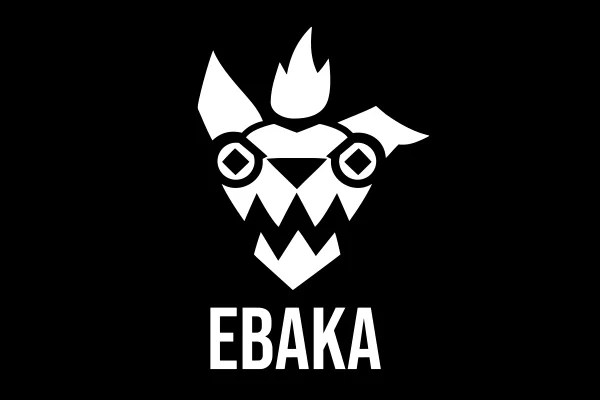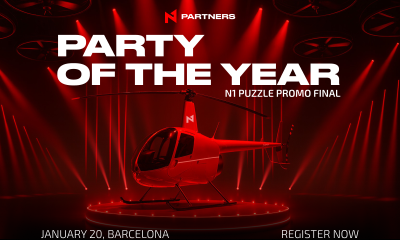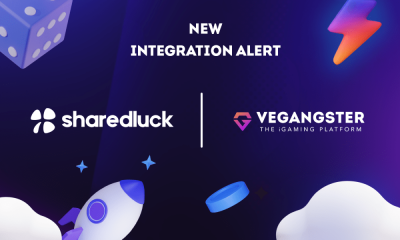Latest News
FANDOM DECODES THE TUG-OF-WAR FOR FAN ATTENTION BETWEEN GAMING & ENTERTAINMENT COMPANIES IN 2024 INSIDE ENTERTAINMENT STUDY

Study Identifies a New Target Audience – The “Switchers” – and Why Dramas Could Be the Next Big Gaming Franchise
Forget the gaming vs. entertainment narrative. Fandom, the world’s largest fan platform, today released its annual Inside Entertainment study which reveals a nuanced reality: fans crave both immersive gaming worlds AND timeless storytelling across tv and film, NOT one or the other. Leveraging first-party data from Fandom’s extensive platform – 350 million monthly unique visitors, 45 million pages of content and 250k fan-powered wikis – coupled with a global study, Inside Entertainment: The Entertainment & Gaming Tug of War goes beyond industry headlines to:
- Understand the dynamic coexistence between the gaming and TV/film industries
- Identify a brand new audience – the “Switchers”
- Detail why dramas and book adaptations present a huge opportunity to be the next hit video game franchise
“Every industry analysis refers to the battle for fans’ attention across entertainment and gaming but we’ve found that it’s not an either or. In fact, combined, entertainment and gaming experiences strengthen fan connection and deliver incremental engagement,” said Stephanie Fried, CMO of Fandom. “Understanding the interplay between these mediums is key to building authentic and enduring fan experiences; and understanding the value and role of each medium is essential for developing powerful marketing messaging to attract and retain fans.”
Key Findings
- 67% of fans are spending the same or more time consuming content or playing video games, but their behavior is shifting:
- 33% are spending less time on cable or in theaters – and the number one activity they’re switching to is gaming (59%
Switchers’ refers to the audience moving away from watching movies & binging TV shows in their free time to do other activities. Outside of gaming, switchers are also spending time:
On social media (47%), reading (56%) and doing hobbies (37%)
With 56% of the switcher audience spending time reading, it presents an opportunity to re-engage this audience and pull them back into the ecosystem with new content strategies, like book-to-game or book-to-film cross over adaptations
But don’t worry entertainment companies. Just as gaming is the #1 activity for entertainment fans, watching TV and movies is the #1 activity gamers turn to when taking a break from gaming – which means these industries are inevitably intertwined and could benefit from joint endeavors or conquest/win-back strategies
Drama could be #1 untapped genre for gaming companies to explore when looking for their next big hit. Our data uncovers that drama fans who also game gravitate towards genres like:
- Role-Playing (RPG): 73%
- Adventure: 72%,
- Simulation: 62%,
- Sandbox/Open World: 62%,
- Puzzle: 60%
Gaming wins on super serving the emotional needs of fans, identifying a niche area streamers & studios should not only be aware of – but double down on:
- 82% of gamers think video games are more interactive & engaging than movies and TV
- 59% feel more accomplished when playing a video game
- 53% like that they have more control in the story when playing video games
- 45% feel more invested in the storylines in video games
Top 3 Takeaways For Advertisers and Marketers
1. Gaming is a Friend vs. a Foe
- Despite common misconceptions, there is a true symbiotic relationship between the gaming and entertainment industries – they both serve different emotional needs for fans and can actually complement each other – with the right fan strategy.
- Therefore, if studios, networks and streaming companies cater to the distinct emotional desires of their specific audiences, they can successfully influence a fan’s choice between mediums and content types and build out a more robust conquest strategy for both retention and acquisition.
2. Sway the Switchers
- Switchers are the audience entertainment companies should be first and foremost targeting in this “tug of war” to capture fan attention, because switching to watching TV & movies is the first activity gamers engage in after they stop playing.
- This underscores the importance for entertainment companies to develop strategies that resonate with these “switchers.”
3. Find your Niche
- With the growing intersection between gaming and entertainment, it’s crucial for studios, networks, and streamers to align on a gaming strategy that drives viewer engagement and retention.
- While many entertainment companies know they need a focus on gaming to drive their business forward – how and where are often barriers. Developing a gaming-specific fan strategy by finding niche pockets in the vast ecosystem – like targeting drama fans or creating book adaptations – is key for reaching a high affinity target at scale.
For an interview with a Fandom executive to discuss the study in more detail, please contact Rachelle Savoia at [email protected]
Methodology
The 2024 Inside Entertainment study regionally analyzes the dynamics between diverse forms of entertainment based on a survey of 5,500 entertainment and gaming fans aged 13-54 These insights were validated and deepened through Fandom’s proprietary, first-party data from 2024 – more than 350 million monthly unique visitors, 45 million pages of content across 250,000 wikis. This methodology provides a 360-degree view of franchises and fan interest across the entertainment and gaming landscape through the eyes of Fandom.
Belatra Games
From ‘Mummyverse’ to Crash Games: Belatra Reviews a Landmark 2025

Editor’s Take
Why this matters: Belatra has been a steady hand in the slots world for a long time, but 2025 marked a distinct shift in strategy. By entering the Crash vertical with Goose Boom Bang and winning big at SiGMA Africa, the studio is clearly pivoting to capture the high-growth, high-frequency players in emerging markets. They are no longer just a “classic slots” developer; they are diversifying the portfolio to ensure relevance in regions like LatAm and Africa.
The Full Story
Belatra Games, the specialist online slots developer, has issued a strategic review of its 2025 operations, celebrating a 12-month period defined by entry into new game verticals, significant franchise expansion, and high-profile industry recognition.
The year was characterized by a dual strategy: deepening engagement in established markets while aggressively expanding its content portfolio to suit local preferences in emerging territories.
Portfolio Evolution: Crash and Battles 2025 saw Belatra move beyond its traditional slot roots. The company made its debut in the high-demand Crash game vertical with the launch of Goose Boom Bang, a title designed to tap into the fast-paced gameplay preference of younger demographics.
Additionally, the studio introduced a fresh game concept with the launch of Battles, a new format unveiled for the first time in 2025, with further development planned for 2026.
The ‘Mummyverse’ Expands For fans of classic slots, the highlight of the year was the aggressive expansion of the Mummyverse. Belatra nearly doubled the size of this franchise over the year, making it the most extensive game universe in their entire catalog.
The developer also focused on B2B localization, releasing a number of exclusive bespoke games created specifically for selected operator partners to meet specific local market tastes.
Awards and Recognition The company’s strategic shifts were validated by industry accolades. Belatra secured over 30 nominations throughout the year, with standout wins including:
-
Best Slot Provider (awarded by BitStarz).
-
Most Played Game of 2025 for Make It Gold at the SiGMA Africa Awards.
-
Player’s Pick Award.
Management Commentary Misha Voinich, Head of Business Development at Belatra, commented on the studio’s momentum:
“This year has truly defined who we are as a studio – ambitious, creative and focused on building long-term partnerships. We’ve expanded our universes, launched new ones and entered exciting new markets that will all help us carry this momentum into the New Year.”
The post From ‘Mummyverse’ to Crash Games: Belatra Reviews a Landmark 2025 appeared first on Gaming and Gambling Industry Newsroom.
BMM Testlabs
‘Chaos and Soul’: Ebaka Games Plots Global Expansion After Viral Launch

Editor’s Take
Why this matters: The “Instant Game” vertical (Crash, Plinko, Mines) is becoming crowded, but Ebaka Games is cutting through the noise with a distinct brand personality. By securing BMM Testlabs certification so quickly after launch, they are signaling to Tier 1 operators that despite their “chaotic” marketing vibe, the math underneath is solid and compliant. The backing of industry veteran Dmitry Belianin also adds immediate commercial credibility to the startup.
The Full Story
Ebaka Games, the fledgling studio that promises to bring “chaos and soul” to the iGaming sector, has outlined an aggressive growth strategy for 2026 following a landmark launch period in late 2025.
The studio, which officially debuted in November, reports that its initial rollout reached more than five million people worldwide. The launch saw its portfolio go live with the operator Menace, serving as the initial testbed for its mechanics and “Ebaka modes.”
The Product: Instant Games with Personality Ebaka is bypassing traditional slots to focus on the high-growth vertical of fast-paced, instant-win games. Their initial lineup includes:
-
Plinko
-
Mines
-
Tower
-
Limbo
-
Crash
Differentiation is achieved through unique mascots and signature gameplay tweaks designed to offer high win potential and distinct visual identities, moving away from the generic interfaces often found in this genre.
Regulatory Milestone Crucially for its 2026 roadmap, Ebaka Games has confirmed it has secured certification from BMM Testlabs. This accreditation validates the fairness and integrity of its RNG (Random Number Generator) and game engines, removing a major barrier to entry for regulated markets. With this certification in hand, the studio plans to launch with a number of “major brands” in the coming year.
Management Commentary Vitalii Zalievskyi, CEO of Ebaka Games, commented on the studio’s unorthodox approach:
“It’s only been a few weeks since we first introduced Ebaka Games to the world. The feedback has been breathtaking, and it vindicates the decision for us to take a different path to the rest of the industry. You don’t need huge marketing budgets to grab people’s attention if you are building something truly innovative.”
Industry Backing The studio describes itself as being “created by players for players” but boasts significant industry firepower in its corner. The team includes Dmitry Belianin, a well-known figure in the sector who is the co-founder of Blask and Menace, as well as Managing Partner at Already Media.
The post ‘Chaos and Soul’: Ebaka Games Plots Global Expansion After Viral Launch appeared first on Gaming and Gambling Industry Newsroom.
ARC
Racing Meets Nightlife: SBK Backs ARC’s New ‘Friday Night Live’ Series

Editor’s Take
Why this matters: British racing has a well-documented demographic problem; its core audience is aging. “Friday Night Live” is a direct attempt to fix this by blending high-stakes racing with the “experience economy” (DJs, nightlife vibes) that appeals to Gen Z and Millennials. Bringing SBK on board—a mobile-first, app-only sportsbook—is a perfect demographic fit, while the Racing Post adds the necessary credibility to ensure the actual racing product remains the focus.
The Full Story
Arena Racing Company (ARC) has unveiled the strategic commercial lineup for its upcoming Friday Night Live series, confirming SBK as the Exclusive Betting Partner and The Racing Post as the Official Media Partner.
Set to launch in January 2026, Friday Night Live is a new initiative created in collaboration with youth-focused events company INVADES. The series is designed to overhaul the traditional race day experience, featuring fast-paced fixtures under floodlights, DJ sets, and significant entertainment elements sandwiched between races.
The Commercial Deal
-
SBK: As the exclusive betting partner, the Smarkets-owned sportsbook will take naming rights and on-course branding for all 35 races. Crucially, these races will be broadcast live on mainstream television via ITV Racing as well as Sky Sports Research.
-
The Racing Post: As the Official Media Partner, the publication will provide content, coverage, and promotion across its digital platforms, aiming to bridge the gap between established racing purists and the new audience ARC hopes to attract.
A High-Stakes Experiment The series is not just a marketing exercise; it carries serious sporting weight. Each of the five scheduled nights will feature over £200,000 in prize money. The fixtures will rotate across three of ARC’s all-weather tracks: Wolverhampton, Newcastle, and Southwell.
Management Commentary David Leyden Dunbar, Group Director of Commercial Strategy at ARC, was clear about the target audience:
“We have been very clear that one of the aims of Friday Night Live is to engage the next generation of racing fans… Both [partners] have shown real enthusiasm to work with us… as well as using the platform that these fixtures will offer them to also engage with more established racing and sports fans.”
Adam Baylis, Marketing Director at SBK, added:
“Friday Night Live [is] a fresh and engaging concept that brings a new energy to British racing. SBK has always been built around sport… our focus is on enhancing the live race day experience in a fun, social and responsible way.”
The 2026 Schedule The series kicks off immediately in the new year:
-
9th Jan: Wolverhampton
-
6th Feb: Newcastle
-
20th Feb: Southwell
-
20th March: Wolverhampton
-
27th March: Newcastle
The post Racing Meets Nightlife: SBK Backs ARC’s New ‘Friday Night Live’ Series appeared first on Gaming and Gambling Industry Newsroom.
-

 Latest News5 days ago
Latest News5 days agoVegangster Gives Operators Real-Time Jackpot Control and a New Revenue Stream with Sharedluck’s JackpotX
-

 Latest News5 days ago
Latest News5 days agoRegistration Open: N1 Puzzle Promo Show & Winner Announcement in Barcelona
-

 Central Europe7 days ago
Central Europe7 days agoScatterKings adds sugar-coated spin to Austria with bespoke win2day partnership
-

 Latest News7 days ago
Latest News7 days agoTop 5 Newest High-RTP Slots at Social Casinos This Month
-

 affiliate marketing4 days ago
affiliate marketing4 days agoSOFTSWISS 2025: 45% Game Portfolio Growth, LatAm Extensive Expansion and Flagship iGaming Trends Report
-

 Asia6 days ago
Asia6 days agoInsurgence Gaming Company Introduces La Imperia, a Community-First All-Female VALORANT Tournament
-

 Christos Zoulianitis Chief Commercial Officer at ENJOY6 days ago
Christos Zoulianitis Chief Commercial Officer at ENJOY6 days agoENJOY Gaming turns up the heat with Hotfire Diamonds 2: Hold and Win 3x5x3
-

 Latest News5 days ago
Latest News5 days agoVegangster Gives Operators Real-Time Jackpot Control and a New Revenue Stream with Sharedluck’s JackpotX































